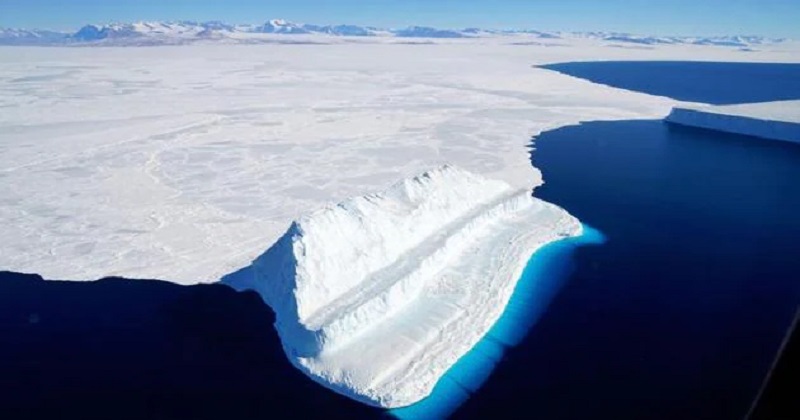
The American Geophysical Union issued a warning on Monday that the gigantic glacier Thwaites also known as the Doomsday Glacier – maybe the size of the state of Florida may be about to collapse. Scientists have been watching the glacier for years, whose ongoing melting contributes to about 4% of annual sea-level rise.
The eastern part, which borders an undersea mountain, had been thought to be more stable. However, the latest satellite photographs have revealed fractures that allow rising ocean waters which accelerates their dissolution. In a paper presented at the meeting of the American Geophysical Union, scientists said, ‘We have identified weak and strong areas of the ice shelf and suggest a zigzag path the fractures might take through the ice shelf, ultimately leading to break up of the shelf within five years, which would result in more ice flowing off the continent’.
Warm ocean water is not only melting Thwaites from below, it is also loosening the glacier’s grip on the submerged seamount beneath it, making it even more unstable. As a result of the warm water, the ice is thinning and weakening. And the process moves faster, pushing back the point when the glacier body becomes buoyant. An offshore underwater ridge currently limits the leading edge’s flow speed to a third of that of the ice shelf’s western sector, which is unconstrained.
Since Thwaites is moving so rapidly and may have a significant effect on sea-level rise, more than 100 scientists from the US and the UK have collaborated on eight research projects to track the glacier from top to bottom; several of these teams presented their results at AGU this year. To assist world leaders and policymakers in planning for the future, the ITGC teams in Antarctica will monitor and study the changes in the continuous interaction between the glacier, ice shelf, and ocean on Thwaites. Policymakers will be able to track the effects of glacial melt on sea-level rise in the next few decades, and how that will affect coastal towns around the world.

Post Your Comments